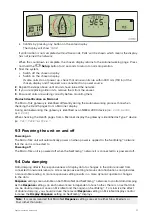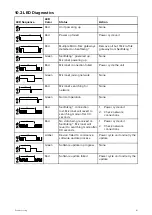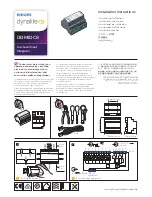
• For power cable extensions, a
minimum
wire gauge of 16 AWG (1.31 mm
2
) is recommended. For
cable runs longer than 15 meters, you may need to consider a thicker wire gauge (e.g. 14 AWG
(2.08 mm
2
), or 12 AWG (3.31 mm
2
) ).
• An important requirement for all lengths of power cable (including any extension) is to ensure that
there is a continuous
minimum
voltage at the product’s power connector of 10.8 V dc, with a
fully flat battery at 11 V dc.
Important:
Be aware that some products in your system (such as sonar modules) can create voltage peaks at
certain times, which may impact the voltage available to other products during the peaks.
More information
It is recommended that best practice is observed in all vessel electrical installations, as detailed
in the following standards:
• BMEA Code of Practice for Electrical and Electronic Installations in Boats
• NMEA 0400 Installation Standard
• ABYC E-11 AC & DC Electrical Systems on Boats
• ABYC A-31 Battery chargers and Inverters
• ABYC TE-4 Lightning Protection
Sharing a breaker
Where more than 1 piece of equipment shares a breaker you must provide protection for the
individual circuits. E.g. by connecting an in-line fuse for each power circuit.
1
Positive (+) bar
2
Negative (-) bar
3
Circuit breaker
4
Fuse
Where possible, connect individual items of equipment to individual circuit breakers. Where this is
not possible, use individual in-line fuses to provide the necessary protection.
48
Summary of Contents for MICRO-TALK
Page 2: ......
Page 4: ......
Page 8: ...8...
Page 12: ...12...
Page 21: ...Chapter 4 Parts supplied Chapter contents 4 1 Parts supplied on page 22 Parts supplied 21...
Page 24: ...5 1 Product dimensions 24...
Page 40: ...40...
Page 62: ...62...
Page 68: ...68...
Page 78: ...78...
Page 80: ......
Page 83: ......
















































